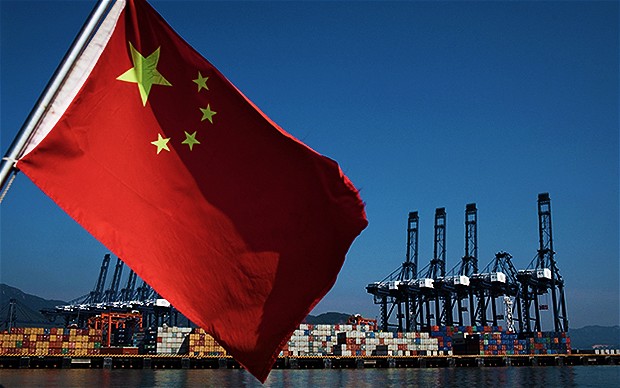Ever since its formal proclamation in 1949, the People’s Republic of China has followed the pattern of a centrally planned economy, which was later supplemented with quasi-capitalism in 1976. This means that while the state still makes important decisions for strategic pillar sectors such as energy production and heavy industries, the concept of private enterprise is a key factor in the economy. With the initiation of economic liberalization in 1978, China has been the fastest growing economy in the world, and this trend continued until 2014, when it was declared the second-largest economy in the world. However, with the new year there has been an ever increasing spotlight on the Chinese economy and the possibility of a debt bubble burst.
Every year, the Chinese government sets a growth target for the economy to achieve. The government’s prioritization of investment over consumption is a direct result of this growth target. The service industry was duly and regularly neglected, leading to wasteful investment in production and manufacturing. The ever increasing emphasis placed on this target gave rise to a “growth-at-any-cost” mentality. By regularly meeting this high target, the Communist Party hoped to lend legitimacy to its monopolization of political authority in the country. In this manner, the gross domestic product target acts as part of the political narrative. The target is never set above a range the government doesn’t expect to meet. And so this year, with a slowing economy, the government set a target of 6.8 percent growth, the lowest it has been since 2009. While the government is sure it will be able to meet the target and win the approval of its people, global economists are predicting the growth rate to slow at a far greater rate.
Unable to separate politics from economic progress, the Chinese government now finds itself in a tough spot. For a long time, the consistent boom of the Chinese economy, while threatening to the global economy, also proved to be a reliable source of growth for it. As a driver of corporate strategies and geopolitical investment, China was the ultimate customer for multinational corporations across the globe. A heavy consumer of natural resources (steel, iron ore, copper etc.) and industrial machinery, China proved to be a safeguard of investment and profit for mining and industrial companies. Now, as their economy’s growth slows, multinationals find it difficult to rely on China much longer. Further, the devaluation of the Chinese currency has caused investors in the country’s economy to actually move money out of the economy. More than money, manufacturers of technological products (Apple, Samsung etc.) as well as automobiles (Ford, Audi etc.) have begun to question the future purchasing power of the average Chinese consumer. As a result, they have begun to send smaller shipments to the nation. While such a shift might actually promote a rise in Chinese manufacturing, the silver lining of increased Chinese products is not in the country’s near future.
The heart of this issue lies in the way the Chinese government has been conducting its affairs. Officials at the national and local levels have been falsifying data in an attempt to prove that they are meeting the high growth targets. Falsification of data seems inconsequential in the short run, but has drastic implications in the long run, as now seen. For example, false devaluation of the currency may have led to higher exports in the short run, but in the long run it increased the price of imports, which is bad for domestic Chinese firms. Costlier imports and cheaper exports increase China’s dependence on exports while slowing down domestic production and the service industry.
Further, over the years, the government, as well as Chinese banks, have been pumping large amounts of money into the economy to keep it abreast of the targets. The government does this through open market operations. When they try to increase the money supply in the economy, they buy goods and services (including companies and corporations) from the people (or private sector). Once again, in the short run, this move of monetary easing can uplift the economy and provide it with a much needed temporary boost. The problem with such a move is that continuous bailouts can put the government in a position of a budget deficit. But more worrisome than this is that bailouts send a scary global message. Foreign investors are not particularly keen on investing in private corporations that require national funding to stay afloat. Further, it puts immense pressure on the output production of a nation.
In conclusion, China has established itself on a shaky foundation, placing more emphasis on the appearance of its economy than on its economy’s foundational strength. For long, the Chinese have been able to fool actors in the global economy into believing that their economy is completely shock resistant and risk averse. However, the crash in the Chinese stock market was a rude awakening to government officials as well as investors, who now realise that further investment in the country could be risky.
Pranati Kohli is a College sophomore from New Delhi, India





